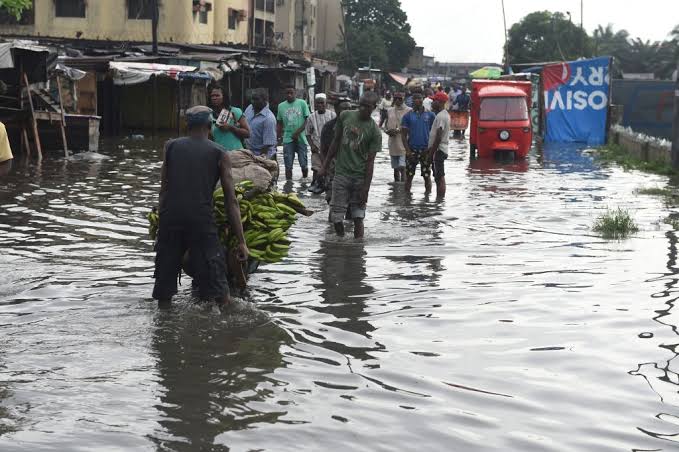Seven years ago, the worst flooding in more than 40 years in Nigeria claimed over four hundred and thirty-one lives and displaced nearly two million people. According to National Emergency Management Agency, NEMA, Nigeria lost about two point six trillion Naira to the 2012 flood disaster.
Flood, however, is the unusual presence of water on land to a depth which affects normal activities. Flood is a natural occurrence. Yet, its impact can be controlled by man.
The frequency of flooding differs across regions, but the height of the rainy season tends to be from July to September. This period is often a time of anxiety for many communities living in flood-prone areas. Heavy rains combined with poor drainage systems and blocked waterways cause rainwater to flow through commercial and residential dwellings.
Last month, the Nigeria Hydrological Services Agency, NIHSA, predicted that seventy-four Local Government Areas across the country will witness high flood risk during the rainy season this year. The agency explained that all the thirty-six states in the country and the Federal Capital Territory are expected to experience different levels of flooding.
The implication of this year’s prediction is that there will be shorter period of rain falls and early seizure. Given the destructive socio-economic impact of the flood, it is critical that mitigating measures be put in place to forestall resurgence of 2012 episode.
Indeed, state governments in conjunction with civil society groups, NGOs and faith-based organisations must embark on aggressive environmental awareness campaign to reduce people’s vulnerability. Thankfully, Anambra state government through the State Emergency Management Agency has kick started an awareness campaign, while the State Ministry of Environment has declared state of emergency on environment.
Communities living in flood prone areas should be made to relocate to higher grounds on time as non-adherence to flood early warnings has been identified as the major problem militating against prevention, mitigation and preparedness against flood disasters in Nigeria.
In addition, homes, public buildings and schools and other critical social infrastructure should be built above flood level in communities in flood-prone areas. Relevant Agencies must be made functional and fully equipped with the right logistics to take on the onerous task of combating disasters.
Citizens should not solely depend on governments. They should ensure they clear their drainage and waste water channels.
For the impact of flooding to be reduced in the future, the consequences of rapid urbanisation and poor urban planning need to be addressed. Destruction of property can be reduced by introducing effective town planning, respecting construction rules and regulations, and rooting out corruption in the building certification process.
Raising public awareness and encouraging people to become more aware of their urban environment are also key. Unless these practical measures are taken, flood will continue to destroy lives and property. This is also a call for action to protect the environment.









Comments are closed for this post.